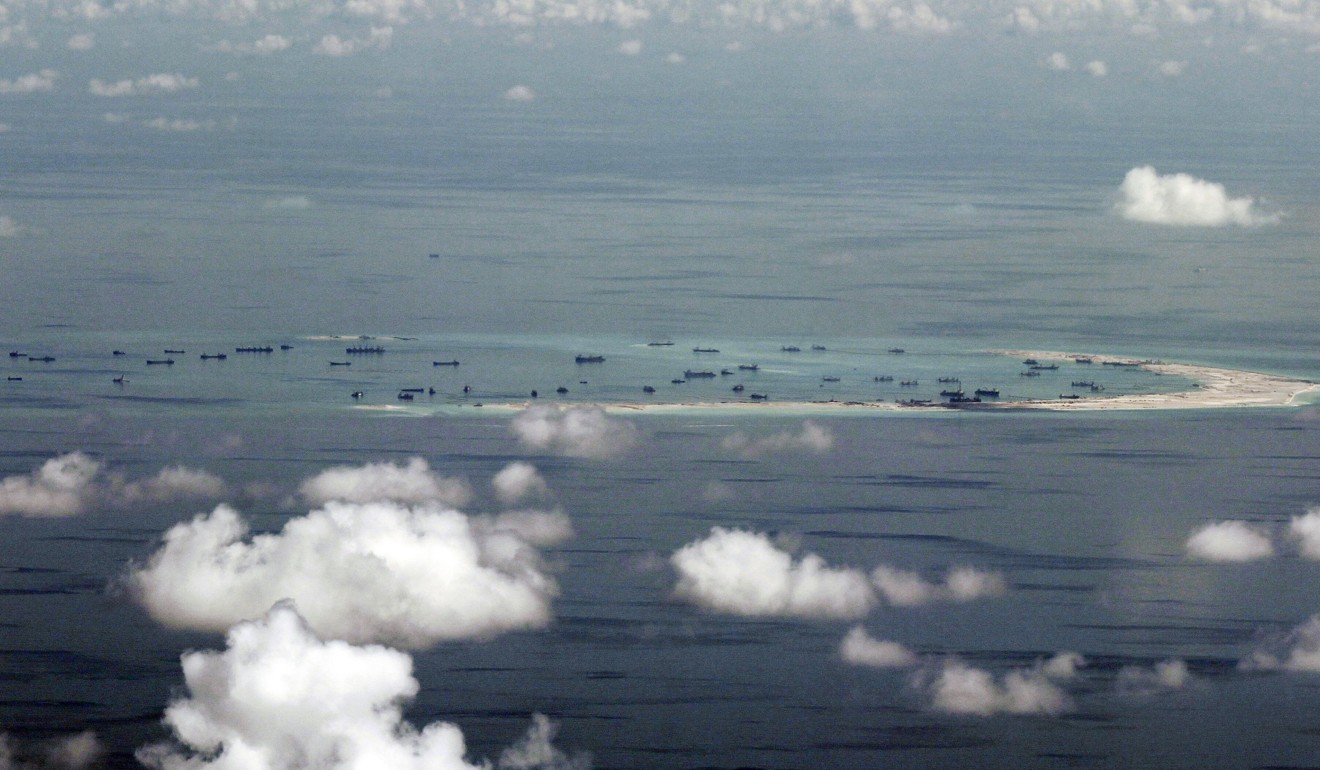
China builds fighter hangars and fixed weapons positions on South China Sea outposts, US says
Once facilities are complete, Beijing will have capacity for up to three regiments of fighters in the Spratly Islands, according to Pentagon report
China was constructing 24 fighter-sized hangars, fixed-weapons positions and other military-related infrastructure on each of three major Chinese-occupied features in the disputed South China Sea as of late last year, the US Defence Department said on Tuesday.
“China’s Spratly Islands outpost expansion effort is currently focused on building out the land-based capabilities of its three largest outposts – Fiery Cross, Subi and Mischief Reefs – after completion of its four smaller outposts early in 2016,” the Pentagon said in an annual report to Congress on military and security developments involving China.
“Once all these facilities are complete, China will have the capacity to house up to three regiments of fighters in the Spratly Islands,” whose ownership is disputed between Beijing and its smaller neighbours such as the Philippines and Vietnam, the report said.
No substantial land has been reclaimed at any of the seven Chinese-held outposts since Beijing ended its artificial island creation in the Spratlys in late 2015, according to the report.
“In 2016, China focused its main effort on infrastructure construction at its outposts on the Spratly Islands,” it said.
Last year, China “reached milestones” of landing civilian aircraft on its airfields on Fiery Cross, Subi and Mischief reefs for the first time, as well as landing a military transport aircraft on Fiery Cross Reef to evacuate injured personnel, it said, cautioning that Beijing was attempting to force a shift in the status quo in the disputed sea.
“Although its land reclamation and artificial islands do not strengthen China’s territorial claims as a legal matter or create any new territorial sea entitlements, China will be able to use its reclaimed features as persistent civil-military bases to enhance its presence in the South China Sea and improve China’s ability to control the features and nearby maritime space,” it said.

“Since the arbitration ruling, China has downplayed its rhetoric on the nine-dash line in official media,” it said.
Regarding the Senkaku Islands, a group of East China Sea islets controlled by Japan but claimed by the mainland and Taiwan, the Pentagon said that last year Beijing continued to use law-enforcement ships and aircraft to “patrol” near the islands in an attempt to undermine Japan’s administration of them.
Last September, Japan and China resumed talks on setting up a communication line to “de-conflict” air and maritime traffic in the waters but made little progress, it said.
The United States affirmed the Senkakus, called Diaoyu on the mainland and Tiaoyutai in Taiwan, are covered by Article 5 of the Japan-US security treaty, the report said, meaning that Washington would defend Tokyo in the event of emergencies over the islands.
Referring to Beijin’s defence spending, the report said the Pentagon estimates Beijing’s military-related spending exceeded US$180 billion in 2016, larger than the US$144.3 billion defence budget for 2016 China announced in March that year.
The gap stemmed from Beijing’s “poor accounting transparency” and the fact that “China’s published military budget omits several major categories of expenditure, such as R&D (research and development) and the procurement of foreign weapons and equipment,” according to the report.
Citing data showing China’s defence outlays growing at an average of 8.5 per cent a year in inflation-adjusted terms from 2007 to 2016, the report said, “Chinese leaders seem committed to increases in defence spending for the foreseeable future, even as China’s economic growth slows.”
The Pentagon said China was the world’s fourth largest arms supplier from 2011 to 2015 with more than $20 billion in sales, $9 billion of which was to Asia-Pacific nations, primarily Pakistan and also Bangladesh and Myanmar. Sub-Saharan Africa was China’s second-largest regional arms market.
“China’s ability to remain among the world’s top five global arms suppliers hinges largely on continued strong sales to Pakistan and demand for its armed unmanned aerial vehicles,” it said.

